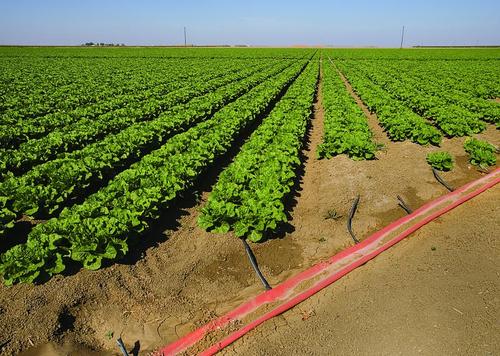Subsurface drip irrigation is a highly efficient system that uses buried drip tubes or drip tape to meet crop water needs. Since the water is applied below the soil surface (as opposed to surface irrigation or traditional drip irrigation), the effects of surface infiltration, such as crusting, saturated condition of ponding water, and water losses via evaporation and surface runoff (including soil erosion) are eliminated. With an appropriately sized and well-maintained subsurface drip irrigation system, water application is highly efficient and uniform. Wetting occurs around the tube and water moves out in all directions. Moreover, water is applied directly to the root zone of the crop as opposed to the soil surface where most weed seeds hibernate. As a result, germination of annual weed is reduced. This lowers the pressure on valuable crops. Furthermore, some crops may benefit from the additional heat provided by dry surface conditions, and produce more biomass. When managed properly the application of fertilizer can be optimized. Fields can still be worked when irrigation systems are installed.
A subsurface drip irrigation system has a similar design as a common drip irrigation system. A typical system layout consists of a settling pond (where possible otherwise a hydro cyclone separator), pumping unit, pressure relief valve, back flow prevention valves, fertilizer injection unit, filtration unit, pressure regulators, air vent valves and PVC pipes delivering the water to the crop. The piping is 10 to 60 cm below the ground, depending on crop and soil (capillary attraction). As a water source, treated greywater or even blackwater is possible, with the risk of clogging being greater if the influent flow has not properly settled. Therefore, treatment of the water (e.g. a constructed wetland or at least a septic tank) before the settling pond is necessary. Subsurface drip irrigation is generally a high-tech, automatically operated technology applied to medium and large-scale production. However, several low-cost and simple methods of subsurface drip irrigation like pitcher or bottle irrigation exist that are equally effective for small-scale farming.
(SSWM 2016d)
The applicability, advantages and disadvantages of subsurface drip irrigation are listed here.
